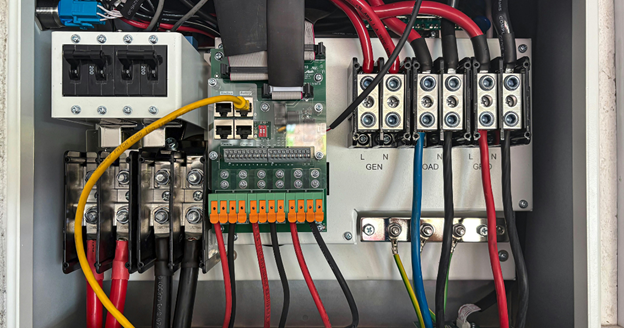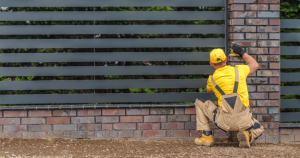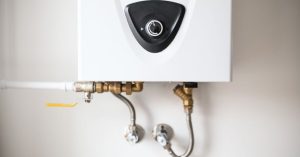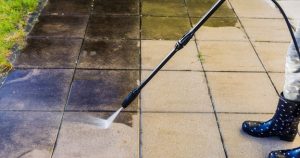What You Should Know Before Installing a New Flat Roof
Planning a new flat roof? Learn about costs, materials, and key considerations to ensure a long-lasting, weatherproof roof.
Before you install a new flat roof, it is important to understand what you are really signing up for, especially if this is the first time you’d be using a flat roof.
Yes, flat roofs are a popular choice thanks to their sleek look, affordability, and space-saving design. But they are not as simple as they look. You have to consider issues like drainage, insulation, material choices, and long-term maintenance.
Making the wrong decision now will cost you thousands in repairs later on. That is why I have written this post to tell you everything you need to know before you install a new flat roof.
What is a Flat Roof?
Judging by the name, I know you are already imagining a completely flat roof, but it is not.
A flat roof actually has a very slight pitch (usually between 1 and 10 degrees) to allow rainwater to drain off the surface. Without this minimal slope, water would pool on your roof, leading to leaks, cracks, and costly structural damage over time.
Most people use flat roofs on garages, home extensions, and commercial buildings where the owner prefers a modern, space-efficient design.
If you want a new flat roof, I can understand the appeal totally. I mean, they are easier to install, they are more accessible for maintenance, and they can even double as extra outdoor space in some designs.
In places like Dublin, where rain falls frequently and weather conditions can be unpredictable, proper installation is crucial. If you are exploring your options for flat roofing Dublin services, make sure you are using the right company and materials.
How to Choose the Right Material for Your New Flat Roof
One of the most important decisions you’ll make during your flat roof project is choosing which material to use.
Each option comes with its pros and cons, so you must carefully consider your options.
The material you use can significantly impact the lifespan of your roof and the frequency of how much maintenance it needs.
Here are the most common materials most people use for a new flat roof:
· EPDM (Rubber Roofing)
This can last between 20-30 years if it is properly installed. EPDM is lightweight and very easy to install.
However, over time, it can shrink if not installed correctly, and this may lead to edge lifting or seam issues.

· GRP (Fiberglass Roofing)
This option offers a sleek, seamless finish that is both modern and highly durable. It is resistant to weather, moss, and impact. So, it is a solid option for you to use on both residential and commercial projects.
That said, fiberglass can crack under heavy pressure or poor workmanship. So, make sure you go with a trusted roofing company.
· Bitumen Felt Roofing
This is for those who want a more traditional approach. People mostly use it on garages and sheds because it is a cost-effective option that can last up to 20 years.
You would easily find this option and most roofers have worked with it. But note that it does not have the same lifespan or weather resistance as newer materials.
It can also be prone to bubbling or cracking over time.
· PVC Roofing
This is another durable and modern material. It is a type of plastic membrane roofing.
PVC is known for its heat-welded seams that create a watertight finish, along with its resistance to chemicals, fire, and extreme weather. It can last up to 30 years, but typically comes with a higher price tag than EPDM or felt.
Now that you know the common options available to you, you need to determine your priorities. Is it budget, longevity, aesthetics, or ease of maintenance?
Picking your roofing material is worth having a conversation with a trusted professional to assess your property and long-term goals before committing to a specific option.
Pay Attention to Your Drainage
One of the biggest lies you can believe when it comes to your new flat roof is that it does not need much attention when it comes to water flow.
In reality, poor drainage is one of the main reasons flat roofs fail early. If water sits on the surface for longer than usual, it can seep into seams, cause material breakdown, encourage algae growth, and lead to costly leaks.
Unlike pitched roofs, where gravity does the work, flat roofs require carefully planned drainage systems to keep the water moving. This usually involves one or more of the following
- Internal drains that channel water into pipes hidden within the structure
- Scuppers, which are outlets that allow water to exit through the edges
- Gutters and downspouts, placed to handle overflow effectively
The drainage plan is more than just the hardware. It also depends on the slight pitch built into the roof structure. Without that, the water will simply pool and stay there. In places with heavy rainfall or colder climates, this can quickly develop into standing water, ice dams, or structural rot.
To put it simply, flat roofs don’t leak because they are flat; they leak because they don’t drain properly.
So, before you install your new flat roof, ask your contractor how they will handle the drainage.
Don’t Overlook Insulation
Insulation plays a big role in both comfort and cost. A well-insulated roof can dramatically reduce heat loss in the winter and keep your home cooler in the summer.
Now, for flat roofs, there are two main insulation approaches: cold roofs and warm roofs.
In a cold roof design, the contractor places the insulation between the joists inside the building. This will leave the external roof deck exposed to the elements. This method is cheaper but less efficient, and it is harder to ventilate. This can lead to condensation problems if you do not manage it properly.
A warm roof, on the other hand, places the insulation above the structural deck, just beneath the waterproof layer. This will keep the entire roof structure warm and reduce the risk of condensation.
Warm roofs are slightly more expensive to install, but they are more energy-efficient, so it no reason why most people prefer them for their new flat roofs.
Hire a Qualified Installer
Let me start with this: Do not attempt to DIY your new flat roof.
Installing a new flat roof is a job that requires precise workmanship. Even the smallest error in installation can lead to major issues down the line, like leaks, pooling, or insulation failure.
So, it is very important to hire a qualified roofing contractor. Look for professionals who are fully insured, have strong local reviews, and offer a workmanship guarantee.
Ask about their experience with the specific material you have chosen, and don’t be afraid to request references or examples of previous work.
If you’re based in Ireland and want a reliable, expert team, I recommend Roofing Dublin. They specialize in high-quality flat roof installations and bring years of experience they’ve gathered working on different projects.

Final Thoughts: Is a New Flat Roof Right for You?
Getting a new flat roof can be one of the smartest upgrades you can make to your space, but you have to make sure it is done right.
There are 3 tips to follow to make sure the work gets done right:
- Understand your needs
- Know your options
- Always work with experienced professionals who won’t cut corners













